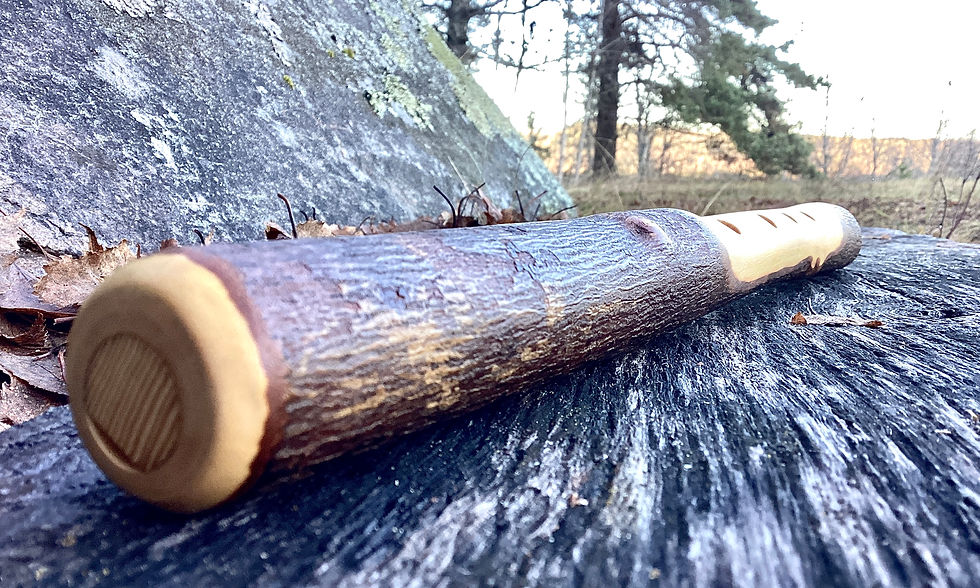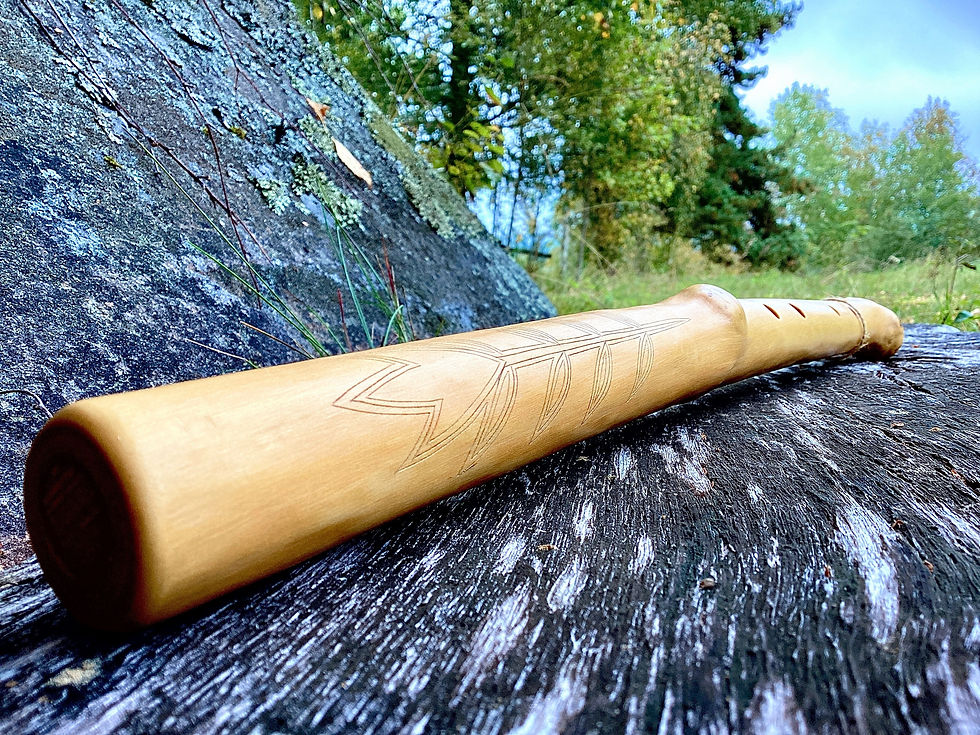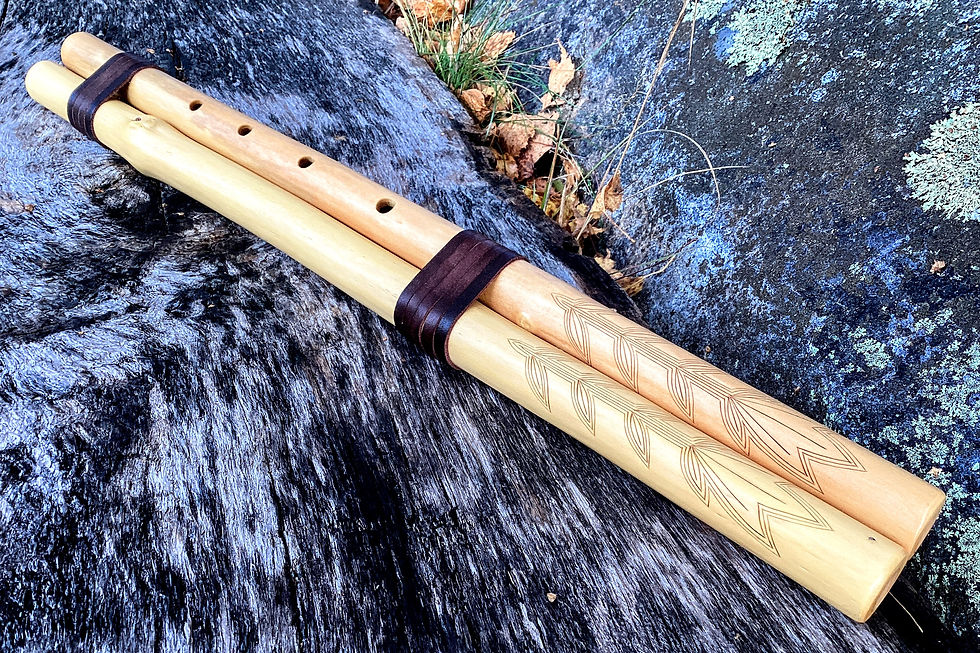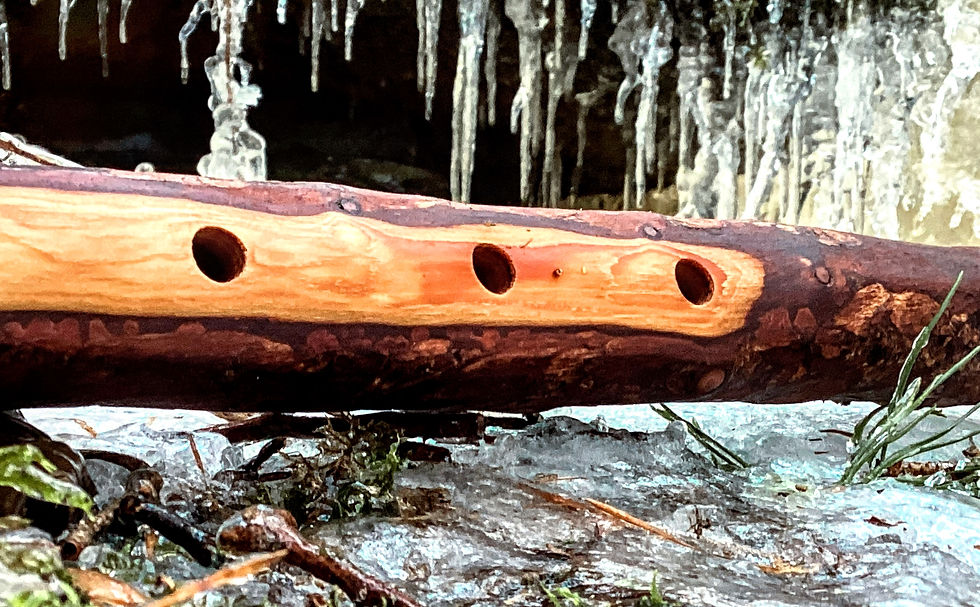PENTATONIC FLUTES
Sound recordings are at the end of the photo gallery. Listening without a good quality stereo or head phones is misguiding!
Instruments are oriented from smallest to biggest one
* * *
Discounted Flutes
How to play Four hole/Pentatonic flutes
Basic introduction
Depending on size and scale they carry and the playing style, these flutes could be anything from wild, chirping bird-like to deeply zen-meditative.
As each hole plays in both lower and higher register, they require a little more breath awareness. In exchange they offer a very wide spectra of playing possibilities: two octaves range,
Overtone flute effect by overblowing, adding voice/ singing while playing, sound modulation by sliding the lower lip into the labium (see how to play video) are some of the possible directions to go with this kind of flute.
How to play:
Holding the flute
Use two fingers of each hand, depending on the flute it may be pointer and ring fingers or pointer and middle fingers, does not matter which hand is where just follow what's natural to you
Try to hold the flute in a relaxed manner. It is beneficial to not grasp the flute too tight.
You should place the pads of the fingers flat over the holes rather than use the end of your fingers. That also helps you relax.
Each hole must be covered completely otherwise the air escape creates ‘wrong’ sounds (squeaking and so), eventually you can practice half opened holes to add some extra notes.
Blowing
Cover the air hole with your lips in such way so all the air goes inside the flute.
With all holes covered blow in very gently-more like a sight then blow. You should hear the base sound of the flute now.
Now try to blow harder-the sound should go up to the next octave. With most of these flutes this is possible to do on each hole.
Common problems
Squeaking is normally caused by one or several holes not being closed properly. Keep adjusting the fingers, try to sense the hole with them.
Too weak or too sharp sounds are likely sourced in too weak or too hard blowing
Finger moves
There is a very simple rule:
-
Base sound- all holes are closed.
-
Lowest finger is up
-
Two lowest fingers are up
-
Lower three fingers are up
-
All four holes are open
You can combine these steps in any way and eventually try out what would other combinations do but these are the ‘correct’ notes.
Extra tips:
-
By blowing in sharply with all holes covered you will get an overtone flute effect. Use short and sharp blows like using your mouth like when saying ts ts ts or the the the.
-
Sliding you your lower lip into the fipple (the little window/ hole where the sound is created) will change the general sound quality. You will need to find the right place/balance
-
Adding voice into the playing gives a whole new dimension. The easiest to begin with is to match the note you are playing















































